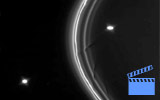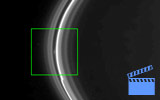Saturn
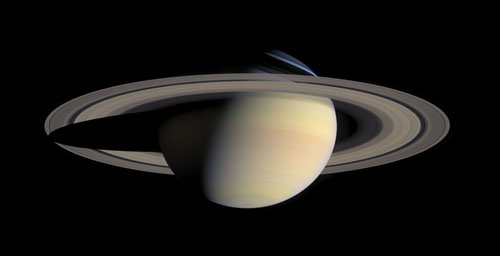
The Cassini-Huygens mission continues to change our view of the Saturn system. Since arriving at Saturn in the summer of 2004, the intrepid spacecraft has completed numerous close flybys of Saturn’s moons, providing new perspectives and a wealth of data about this unique collection of objects. Cassini has monitored powerful lightning-generated radio outbursts and cloud activity produced by giant storms on Saturn that dwarf those on Earth. The Huygens probe landing on haze-shrouded Titan, and Cassini’s continuing survey of this moon from space, have provided tantalizing glimpses of a world that is at once remarkably earthlike yet also frigid and alien. The startling revelation that Saturn’s small, icy moon Enceladus may possess underground reservoirs of liquid water has widened the range of environments that might be hospitable for life.
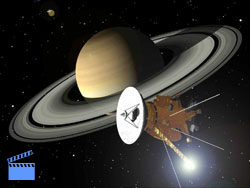 The Cassini mission represents a stage of planetary exploration that is critical to science’s quest to discover the origin and development of galaxies, stars, planets, and life. The recent discoveries of Jupiter-sized planets orbiting stars beyond our Solar System raises the question of whether we’re alone in the Universe. We now have the technologies and tools that may deepen our understanding of the origins of life and the environments in which life may emerge. From the grand telescopes that peer into the distant reaches of the universe to the microscopes that allow us to find the tiny vestiges of bacteria, we are uncovering new evidence in the search for life beyond Earth.
The Cassini mission represents a stage of planetary exploration that is critical to science’s quest to discover the origin and development of galaxies, stars, planets, and life. The recent discoveries of Jupiter-sized planets orbiting stars beyond our Solar System raises the question of whether we’re alone in the Universe. We now have the technologies and tools that may deepen our understanding of the origins of life and the environments in which life may emerge. From the grand telescopes that peer into the distant reaches of the universe to the microscopes that allow us to find the tiny vestiges of bacteria, we are uncovering new evidence in the search for life beyond Earth.
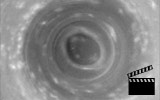 Saturn Facts:
Saturn Facts:
Average distance from Sun: 1.4 billion km
Orbital period: 29 Earth years
Rotation period: 11 hours
Diameter at equator: 9 x Earth’s
Mass: 95 x Earth’s
Tilt of axis: 27°
Number of moons: More than 50
Number of rings: At least 7
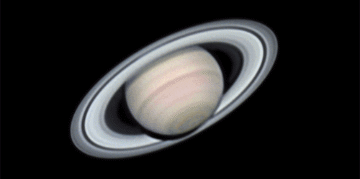
Meet the Moons
Saturn and Jupiter are in a close race for most moons in the Solar System, with new ones turning up all the time. Saturn’s largest moon, Titan, is bigger than the planet Mercury, and is the only moon in the Solar System with a thick atmosphere. It is also the only moon – besides Earth’s – where a spacecraft has landed. Some of Saturn’s moons orbit within the main rings, clearing out gaps and sculpting “ringlets” through gravitational interactions. These peculiar satellites are called “shepherd” moons.
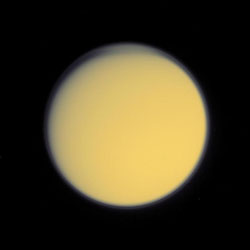 Titan
Titan, world of liquid methane lakes and a dense nitrogen-rich atmosphere.
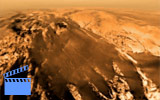
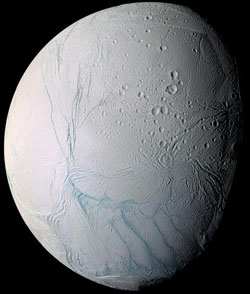 Enceladus
Enceladus, with a frosty surface covering an ocean of liquid water.
.jpg)
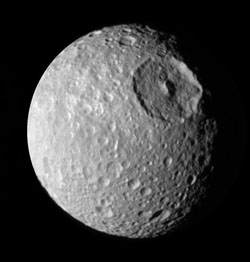 Mimas
Mimas, a small moon almost split apart by a gigantic impact.
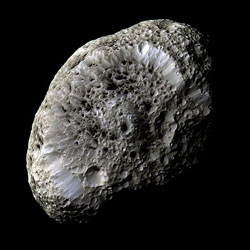 Hyperion
Hyperion – its flattened shape and chaotic orbit may result from a recent collision.
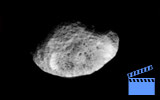
Rings: Not What They Seem
Rings Are Made of Particles of Rock and Ice
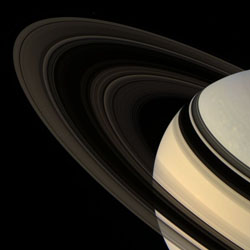
From afar, Saturn’s rings look like a shiny CD. The rings of the other giant planets resemble thin hoops. In fact, planetary rings are nothing more than countless chunks of ice and rock, ranging in size from dust to houses. This blizzard of objects is in orbit around the planet. Studies of rings show they are constantly changing, often under the influence of nearby moons.
All the giant worlds have rings, but none are as magnificent as Saturn’s. The rings are not solid. Instead, they are made of countless ice and rock fragments, ranging in size from dust particles to house-sized boulders.

Saturn’s diameter is more than 9 times that of Earth, and yet its ring system is only about 50 meters thick. This means that if Saturn were the height of a 60-story building, the rings would be as thin as a sheet of paper.
Shepherd Moons
Sometimes rings have "shepherd" moons – small moons that orbit near the outer edges of rings or within gaps in the rings. The gravity of shepherd moons serves to maintain a sharply defined edge to the ring; material that drifts closer to the shepherd moon’s orbit is either deflected back into the body of the ring, ejected from the system, or accreted onto the moon itself.
